
ACL Surgery in NYC

Have you suffered a torn ACL? Are you looking for ACL surgery in NYC? Look no further! Dr. Neil S. Roth and his team at New York Sports Medicine Institute have treated this and an abundance of other orthopedic and sports medicine related injuries.
ACL Injury
For an athlete, an ACL injury is often caused by a quick change in direction, an abrupt change in speed or an awkward landing or pivot. For a football, baseball or soccer athlete, an ACL injury may be caused by the planting or sticking of a cleat in the field of play. A basketball or tennis player may injure the ACL by making a quick change of motion on the court.
Diagnosing ACL injuries may include the need for MRI to determine the severity of the injury. Ligament sprains are frequently described according to three grades of injury. If the ACL is mildly damaged, but still able to support the knee joint, it’s considered a Grade 1 Sprain. A Grade 2 Sprain describes an ALC that is stretched to the point of being loose and a partial tear has been sustained. A complete tear of the ACL is considered a Grade 3 Sprain.
Treatment for ACL injuries is dependent upon the severity of the sprain and the activities required of the patient. Nonsurgical treatment may be recommended for a patient with a partial tear of the ACL, provided the ligament can provide substantial support for the knee. Nonsurgical treatment may include physical therapy and the use of a brace for certain activities.
Surgical treatment for ACL reconstruction often involves replacing the torn ACL with a graft of tendon taken from elsewhere in the patient’s body. Tendon taken from the patient’s own body is referred to as an autograft. Autograft for ACL replacement is often taken from the patellar tendon, hamstring tendon or quadriceps tendon. Rehabilitation following ACL surgery is crucial. The patient’s commitment to performing exercises and engaging in physical therapy plays an important role in the overall success of the surgical procedure.
Determining If You Need ACL Surgery In NYC
An orthopedic doctor will conduct a physical evaluation to determine which diagnostic method would be best. Various methods are used to determine the severity of your knee injury and these can include:
- Ultrasound technology – This technique utilizes high-tech sound waves to produce images in real-time. This can help distinguish where the injury is located.
- X-rays – Similar to ultrasound technology, x-rays are also used to produce images. But, rather than using sound waves they utilize electromagnetic radiation to curate the images. X-rays are often used to find suspected injuries, malformations, or conditions.
- CT Scanning – CT scans are usually ordered if the doctor believes there is a possible injury in tissues, joints or bones. This type of scan produces images that allow a better view of the inside of the body at different angles and positions.
- MRI – Magnetic resonance imaging, or MRI, can allow the doctor to see the inside of the knee and its anatomy. MRI is a form of 3-D imaging that provides a detailed perspective of the knee structure.
- Arthrocentesis – this form of testing is used to examine joint fluid.
ACL Surgery Recovery Tips
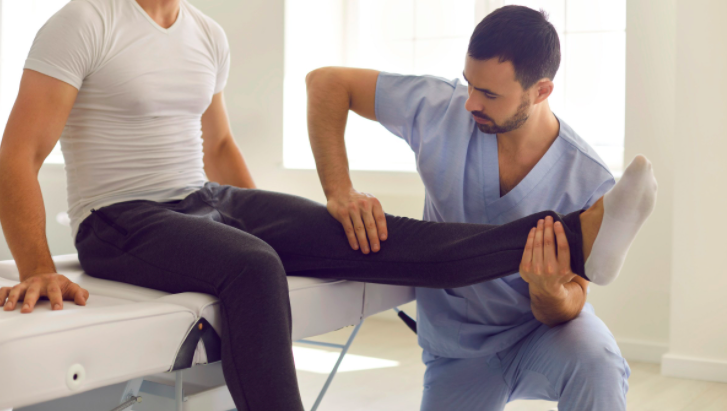
If you have suffered an ACL injury and are seeking ACL Surgery NYC New York Sports Medicine Institute is here for you. The stress and pain involved in an ACL injury can often be overwhelming for patients. Recovery can be a lengthy process, however, there are tips to help you get back on your feet and doing what you love as quickly as possible.
ACL Injuries
An anterior cruciate ligament, or ACL, is a strong band of tissue that connects the thigh bone to the shinbone at the knee. An ACL tear is a common knee injury seen especially in athletes. The injury is caused by a tear or sprain of the ligament. This painful trauma often requires surgery and physical therapy.
There are three types of ACL sprains:
- Grade I: Overstretched ligament that is considered the mildest form of injury and can be treated without surgery.
- Grade II: Fibers of the ligament are partially torn. The ACL is stretched to the point that it is loose and requires surgery.
- Grade III: A complete tear of the ACL into two seperate sections and requires surgery. This is the most common sprain among athletes.
Common Causes for ACL Tear
Sports and fitness activities are the main causes of ACL injuries. Popular sports that are commonly related to ACL injuries include football, basketball, tennis, soccer, and downhill skiing. This is because these sports require increased agility from athletes. The swift motions then create risk for possible injury. Some examples of a movement that put stress on the knees and cause ACL tears are:
- Quick pivoting or “cutting”
- Landing incorrectly from a jump
- Sudden stops
- Twisting the knee
- Sustaining a direct hit on the knee
ACL Surgery Recovery Tips
If you are in need of ACL reconstruction surgery, the days, weeks, and months following the procedure are crucial to recovery. Rehabilitation is a slow process that requires dedication and perseverance. For many athletes, an ACL injury is not only painful physically but also mentally. You may want to pick up and continue your sport right where you left off, however, this is the time to slow down and focus on healing. How well you can take care of your body after surgery may determine the overall success of the procedure. Here are some helpful tips for healing after your ACL surgery:
Establish Your Recovery Goals
ACL Surgery NYC at New York Sports Medicine Institute has a team of highly skilled professionals that are dedicated to helping you throughout your recovery journey. Directly after your procedure, it is important to meet with your physician to discuss your goals for recovery. Be sure to ask any questions you may.
Ease the Pain and Reduce the Swelling
ACL surgery is a reconstruction or replacement of the ACL in your knee. Post-surgery, many patients will be required to take prescribed medications to help ease pain and decrease inflammation. Icing and elevating the knee are necessary for reducing the swelling. This is also the time to be taking it easy, staying off the affected leg, and getting plenty of rest.
Care For Your Incisions
Like any surgery, it is imperative to take care of the incisions to avoid possible infection. Be sure to keep the area clean, avoid submerging in water, and follow up with your doctor for the removal of stitches. Signs of wound infection include warmth, redness, increased swelling, and draining of excess fluids.
Physical Therapy
After ACL surgery, the patient must work on regaining stability. Wearing a brace and using crutches can help to reduce pressure on the knee as well as provide support. Regaining mobility, strength, and stability can be a lengthy but rewarding process. Physical therapy allows patients to work on rehabilitation and is crucial to making a full recovery. Extension and flexion are slowly practiced while the knee begins to recover. To prevent future injuries, the knee must be exercised and strengthened.
Request an Appointment For ACL Surgery In NYC
Sports-related injuries are possible no matter the athlete’s skill level or experience. If you play a sport, you are at risk of damaging your ACL. If you are injured, seeking immediate care is crucial for recovery. The dedicated team at New York Sports Medicine Institute is ready to help you throughout the entirety of your recovery process. To request an appointment, visit our website or call today!

In need of a ACL Surgery NYC for your pain and discomfort? Dr. Neil Roth, an orthopedic knee surgeon, can assist you. Contact one of our three offices today to learn more.
What is the Knee Joint?
As the largest joint in the body, the knee is the most commonly injured joint, especially among athletes and active individuals. In addition to being the largest joint of the body, it is also the most complex, made up of a series of bones, ligaments, cartilage, and more, which allow the joint to serve many purposes and sustain heavy activity.
However, despite this, the knee is extremely susceptible to wear and tear. If you are an athlete, gym frequenter, or are just experiencing knee pain from daily life, our ACL Surgery NYC at NYSMI is here to give you advice on avoiding wear and tear on the knee, and to tell you about some of the knee pain treatment options available to you.
What Causes Knee Injuries and “Wear and Tear” on the Knee Joint?
Usually, the cause of knee pain and injuries is dependent on the type of physical activity and the lifestyle of the individual. For non-athletes, the following can cause knee pain and wear and tear on the joint:
- Frequent stair climbing
- Frequent jumping
- Arthritis
- Repetitive motions
- Awkward planting of the foot when walking/running/climbing
- Lack of muscle flexibility or strength
- Excessive weight and pressure on the knee, from being overweight or obese
However, for athletes and those with highly active lifestyles, wear and tear on the knee can lead to knee injuries. It is important to know what type of knee injury you might have to better prevent wear and tear in the future. Our knee specialist in NYC at NYSMI found that the most common of these are:
- ACL Injury: usually caused by a change in speed or awkward landing or pivot
- MCL Injury: usually caused by collision on the side of the knee
- PCL Injury: usually caused by collision to a bent knee or twisting of the joint
- Meniscus Tear: usually caused by pivoting, twisting, being tackled, abrupt speed change
- OCD of the Knee: a condition that develops in athletes after another knee injury
- Articular Cartilage Injury: damaged cartilage in the knee, or “wear and tear,” requires treatment and prevention methods against further injury
How Can I Avoid and Prevent “Wear and Tear” and Other Knee Injuries?
For athletes, active individuals, and all others, our knee specialist in NYC at NYSMI recommends a variety of measures to prevent knee wear and tear over time. These include:
- Don’t decrease your exercise: Even if you’re experiencing knee pain, it is important to continue exercising regularly. This is so that the muscles of the knee do not weaken or deteriorate. One of the most important aspects of maintaining knee health is to strengthen and increase flexibility in the muscles of the knee. In addition, maintaining a good exercise routine will help keep your weight at a normal level for your height, age, and gender, which reduces stress on the knee and increases mobility.
- Ensure that your footwear is high quality and fits well: Wearing proper footwear, in physical activity and everyday life, is essential in preventing knee injuries and long term wear and tear. Proper footwear allows for ideal hip-leg-knee-ankle alignment, and increases your balance. While improper footwear may not feel as if it increases knee pain at the time, its effects can be long term and highly damaging.
- Warm up before exercise: Flexibility is a key factor in preventing knee pain and injuries. Thigh stretches are especially important in decreasing pressure and tension on the knees. This can also help prevent long term wear and tear as the knee increases in flexibility and range of motion.
- Engage in low-impact exercise: For athletes and those with active lifestyles, opting for low impact exercise is important in maintaining knee strength. Activities that include jumping, collisions, and quick changes in speed can wear and tear at the knee joint over time. While it is important to maintain an exercise program, consider changing your routine to low impact activities, such as walking, swimming, using an elliptical instead of a treadmill, and other practices that reduce impact on the knees.
ACL Surgery NYC
If you are already experiencing knee pain from wear and tear or a related injury, our team at NYSMI is here to help. Our treatment options for knee pain vary based on each individual case, but mainly include:
- Physical Therapy (for most types of chronic knee pain or wear and tear)
- Minimally Invasive Arthroscopic ACL and PCL Reconstruction Surgery
- Partial Knee Replacement (usually for ACL and PCL injuries, as well as osteoarthritis)
- Full Knee Replacement (usually for osteoarthritis)
Contact us today to schedule an appointment, and find out more about how to treat current knee pain, and prevent future wear and tear. ACL Surgery NYC at NYSMI is always ready and able to help!
How Do I Know My Knee Pain Is Serious?
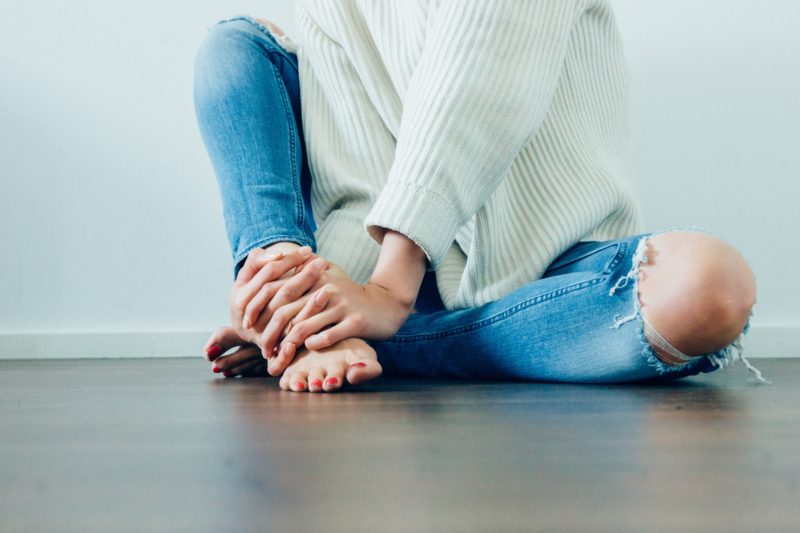
How Can an Orthopedist in NYC Help My Knee Pain?
Whether you’re an athlete or not, knee pain can affect anyone at any time. It can be caused by nearly any kind of action or incident, even if it’s just as simple as walking down the street. Knee pain can range from mild to severe, and can often linger if not properly diagnosed or given the right treatment method. At New York Sports Medicine Institute, our orthopedist in NYC can help accurately diagnose and treat your knee pain. Our orthopedic surgeons are skilled in a variety of different knee injuries and are well-experienced in determining the best plan for your recovery. Continue reading to learn more about knee pain and how you can tell if it’s a more serious issue.
What Are The Symptoms To Look Out For?
With symptoms ranging from less severe to significant, it’s important to take note of how your pain progresses each day. This is a key factor in determining whether or not your knee pain is more serious. The most common types of knee pain symptoms include:
- Stiffness or the inability to straighten or bend the knee(s)
- The surface of your knee feeling warm to the touch
- Popping, clicking, or any other unusual sounds while walking
While these symptoms can indicate the presence of a minor injury, more serious injuries may include symptoms like:
- The inability to stand
- Limping
- Swelling, redness, and fever
- Abnormal appearance revealing a visible sign of injury
- Falling immediately upon standing
The most important thing to look out for when determining if your knee pain is serious is to pay attention to your symptoms. If your slight knee pain starts to develop into the more significant kinds of symptoms as stated above, you should schedule a visit to our orthopedist in NYC. This could mean you have a more serious injury that requires a proper diagnosis and treatment plan.
How Are Knee Injuries Diagnosed?
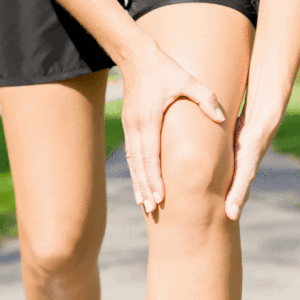
An orthopedic doctor will conduct a physical evaluation to determine which diagnostic method would be best. Various methods are used to locate the source of the pain and can include:
- Ultrasound technology – This technique utilizes high-tech sound waves to produce images in real-time. This can help distinguish where the injury is located.
- X-rays – Similar to ultrasound technology, x-rays are also used to produce images. But, rather than using sound waves they utilize electromagnetic radiation to curate the images. X-rays are often used to find suspected injuries, malformations, or conditions.
- CT Scanning – CT scans are usually ordered if the doctor believes there is a possible injury in tissues, joints or bones. This type of scan produces images that allows a better view of the inside of the body at different angles and positions.
- MRI – Magnetic resonance imaging, or MRI, can allow the doctor to see the inside of the knee and its anatomy. MRI is a form of 3-D imaging that provides a detailed perspective of the knee structure.
- Arthrocentesis – this form of testing is used to examine joint fluid.
The Most Common Type of Knee Injuries
A number of different issues and conditions could be the reason for your knee pain. Traumas or incidents that occur due to sports or various other actions can cause injuries such as:
- ACL injury
- MCL injury
- PCL injury
- Meniscus tear
These injuries can all range in the level of severity, further depicting which kind of treatment plan is needed. Mild sprains can typically be healed using nonsurgical methods. Whereas full-blown tears and fractures may require surgical procedures.
Underlying Conditions That Commonly Cause Knee Pain Also Include:
- Arthritis including osteoarthritis
- Damaged menisci
- Bursitis
- Pseudogout
- Chondromalacia of the patella
- Tendonitis
NYSMI – ACL Surgery NYC
If you find that your knee pain is only getting worse and is starting to affect your everyday life, it’s time to schedule an appointment with our ACL Surgery NYC. Our orthopedic doctor can help to find a definitive answer to what is causing your knee pain and provide you with an optimal treatment plan for your recovery. So stop living with your persistent knee pain and schedule an appointment with our orthopedic doctor today!
Different Ways To Treat Knee Pain
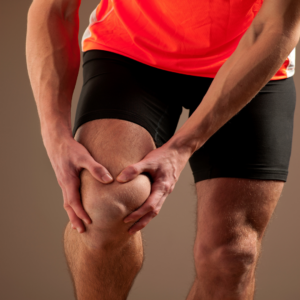
The New York Sports Medicine Institute has an orthopedic surgeon in New York City that provides a wide range of highly specialized treatments that properly evaluate and treat sports-related injuries and chronic conditions that affect the hip, knee, shoulder, wrist, hand, elbow, foot, and ankle. Sports injuries are often caused by trauma suffered during competition and chronic conditions including arthritis or other related health issues often result in sustaining knee injury and deterioration. If you feel you fit the description or suffer from joint pain, plan for ACL Surgery NYC at the New York Sports Medicine Institute.
Arthritis of the Knee:
Arthritis is swelling and tenderness of one or many joints and is caused by inflammation of the joints. There is no cure for arthritis but there is a wide range of treatments that have been developed over the years, ACL Surgery NYC consultation from the New York Sports Medicine Institute will identify and plan treatment accordingly with the commitment of your safety and recovery. Arthritis of the knee is sustained trauma or from disease, osteoarthritis, and rheumatoid arthritis.
Osteoarthritis is the deterioration of joint cartilage which causes bones to rub against one another and is the most common form of arthritis and affects millions of people worldwide. The osteoarthritis beginning stages can be brought on through physical injuries, such as blunt trauma, but the most common cause of this type of arthritis is due to natural aging. Osteoarthritis can affect any joint but the most common areas include the hands, knees, hips, and spine.
The knee is considered the largest joint in the body and also the most easily injured. This joint serves many purposes such as supporting weight, pivoting, running, and jumping. The knee consists of the lower end of the femur, or thigh bone, which rotates on the upper end of the tibia, or shin bone, the patella, or kneecap, which slides in a groove on the end of the femur. The knee contains ligaments that help control the range of motion by connecting bones and bracing the joint against abnormal types of shock and motion.
The knee is stabilized by the Anterior Cruciate Ligament (ACL) and Posterior Cruciate Ligament (PCL) which cross one another on the inside of the knee. The Medial Collateral Ligament (MCL) and the Lateral Collateral Ligament (LCL) provide stability on the outside of the knee while the Meniscus, a soft wedge of cartilage between the femur and tibia, serves as a cushion to the knee and has a primary function of absorbing shock during motion.
Types of Knee Pain and injuries:
Anterior Cruciate Ligament (ACL) injury is caused by quick changes of direction in the knee during motion, abrupt changes in speed, or an awkward landing or pivot on the knee.
Medial Collateral ligament (MCL) injury is sustained by collision absorbed to the side of the knee which causes the ligament to stretch to the point of rupture or tear.
Posterior Cruciate ligament (PCL) injury is caused by a strong force, such as blunt or collision trauma, to the knee in a bent position, twisting, or hyperextension leading to injury.
Meniscus tears are injuries in which there are tears in knee cartilage that can be caused by wear and tear or motion injuries such as pivoting, twisting or cutting.
Osteochondritis dissecans (OCD) of the knee is when a piece of cartilage and a layer of the bone beneath it, typically the femur, come loose from the bone.
Different ways to treat knee pain:
Consider ACL Surgery NYC at the New York Sports Medicine Institute for minimally invasive arthroscopic ACL and PCL reconstruction surgery, a widely accepted treatment for ligament issues.
Meniscus repair addresses cartilage problems.
Total knee replacement or knee arthroplasty is a surgical procedure that replaces all three parts of the knee in order to restore function and relieve pain and discomfort caused by injury and trauma. The most common condition that leads to total knee replacement surgery is a degenerative joint disease, such as osteoarthritis, and typically affects middle-aged and older adults but knee trauma and other factors can result in the early onset of this disease.
Partial knee replacement is typically for people dealing with degenerative disease and only the damaged part of the knee cartilage is replaced with a prosthesis. This type of treatment is appropriate for patients with medial, lateral, or patellofemoral knee osteoarthritis.
Physical therapy for a range of motion and core strengthening.
Rest, ice, compression, and elevation are good for minor knee pain caused by inflammation or injury.
At New York Sports Medicine Institute we are committed to excellence by providing the highest quality of orthopedic and sports medicine care. Along with the treatment of immediate or chronic problems, New York Sports Medicine Institute strives in the prevention of all treatment to alleviate future difficulties. For surgical, and non-surgical needs, consider ACL Surgery NYC at New York Sports Medicine Institute for consultation, booking available online here.
Risk Factors Of Knee Injury
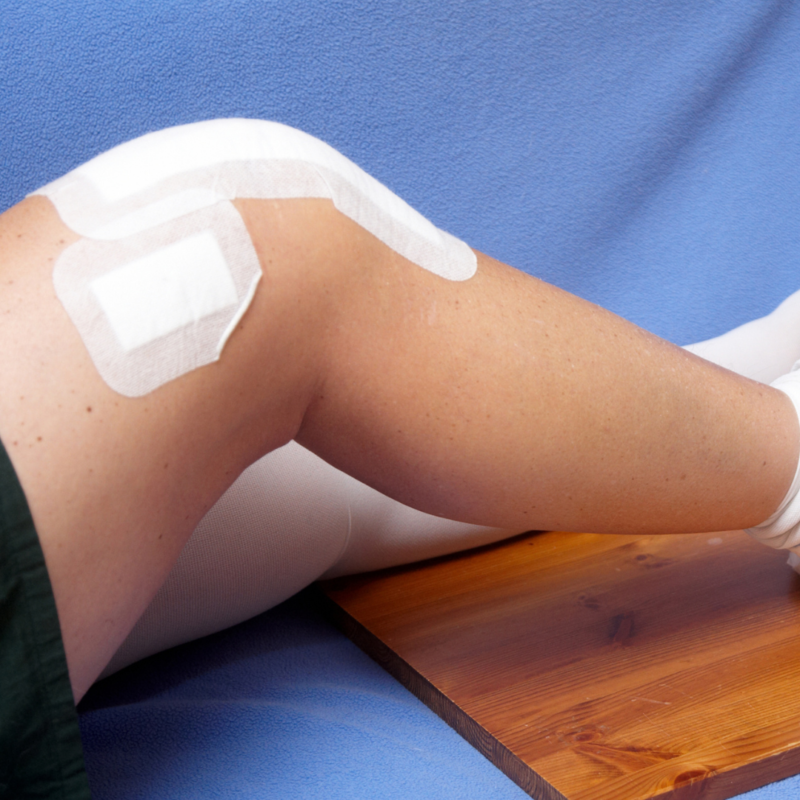
The knee is one of the essential joints in the human body. Many everyday activities rely on the movements at the knee joints, including walking, running, and standing. Since your knee has so many functions that support your daily activities, it is a high-risk area. The common reasons for knee pain are related to injury and repeated stress on the knee. Knee injuries would have symptoms including swelling, redness, tenderness, etc. If this sounds like your situation and you are looking for an ACL Surgery NYC, then the New York Sports Medicine Institute is where you can look for doctoral advice.
Who is NYSMI?
The New York Sports Medicine Institute, ACL Surgery NYC, is a full-service sports medicine practice with authoritative specialties in Orthopedic Surgery, Physical Therapy, and Concussion Care. NYSMI has always aimed to provide the highest quality of orthopedic and sports medicine services. In addition to treating immediate and chronic problems, NYSMI also tries to integrate the doctrine of prevention in all its treatment plans. NYSMI serves patients three years old and up, with treatment and surgery for orthopedic and sports injuries to help with the pain occurring at shoulder, knee, hip, and other pains, from the mild to the severe. NYSMI’s experienced and licensed physical therapists help you improve your mobility and quality of life. Physical therapy can also be an alternative to surgery and pain medication. The NYSMI team has extensive training in diagnosing and treating conditions that limit the body’s ability to move and function in daily life, helping you get back in the game.
What Causes Knee Injuries?
Being active is one of the best things for you to keep your overall health. But getting injuries from being active is common, and they often involve the knees. Knee injuries are usually caused by external forces twisting or bending the knee in a manner it is not anatomically designed for. Common causes of knee injuries include twisting mechanisms caused by falls, sports, or accidents. High-force injuries such as those caused by sports-related injuries and motor vehicle accidents can damage multiple parts of the knee anatomy, causing multiple types of knee injuries.
Risk factors of Knee Injury
Overuse, improper training, osteoporosis, and participating in high-impact sports with sudden changes in direction are all risk factors for a knee injury. Knee pain and swelling are the most common signs and symptoms. Here are some risk factors of knee injury:
- High-impact sports: Running, basketball, football, hockey, soccer, cycling, and etc., could increase the risk of knee pain and injury.
- Exercise: Exercises such as high-impact cardiovascular activity or yoga could also cause knee injuries.
- Overweight: Overweight is a risk factor for knee injuries because it puts more pressure on the lower extremity joints.
- Lack of muscle flexibility or strength: The lack of muscle flexibility could increase the risk of getting knee injury since your muscles help stabilize and protect your joints and let you move freely.
- Overuse / Overtraining: Knee injuries can also be caused by improper or insufficient training for a sport or by improperly rehabilitating acute injuries.
Prevention Tips for Knee Injury
Even though you could not prevent all injuries, you could take some steps to make them less likely. Here are some tips for you to help prevent knee injuries:
- Stretch your muscles and joints after gently moving through the motions of your sport or activity.
- Make sure you wear appropriate footwear.
- Do not make sudden, jarring movements.
- When changing directions, turn on the balls of your feet instead of twisting your knees.
- Slowly increase your exercise program over time.
- If you kneel a lot, you should wear knee pads to prevent bursitis.
- Perform light, easy, and sustained stretches after exercising.
Make an appointment with your doctor if your knee pain worsens to the point that it interferes with your everyday activities or sleep. NYSMI, ACL Surgery NYC, is committed to ensuring that you are able to do what you enjoy doing every day. The orthopedic surgeons of the New York Sports Medicine Institute are skilled at diagnosing knee injuries and developing an optimal treatment plan. Physical therapy and onsite X-rays are available for patients. We want to make sure that your life is as fulfilling as it was before your injury and that you may improve your athletic ability as a whole.
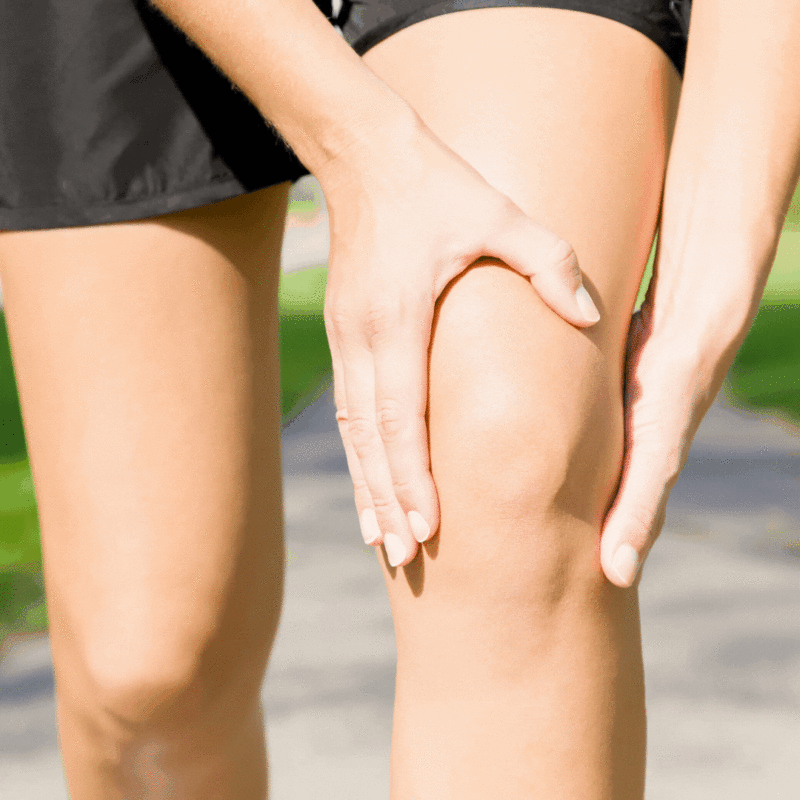
Everybody knows the physical drain of a knee injury can be crushing. Millions of Americans suffer from many types of knee pain every single year. It can be hard distinguishing serious pain from less severe pain. All pain should be looked into, but some ailments need more attention than others. For example, a meniscus tear is more severe than a bruise on your knee. Even though both can be painful, meniscus tears propose more harm to your body. Understanding the difference between severe injury and less serious injury is important because it may one day save future damage, and it can also reduce stress. So, contact ACL Surgery NYC, if you need to learn the difference between serious and less serious injury.
Signs of a Serious Knee Injury
There are a few things to look out for when you have just experienced a knee injury. The following list signals a serious knee injury:
- Swollen Knee
- Locked Knee/Won’t Bend
- Intense pain
- Felt/Heard a “Pop”
- Extreme Difficulty Walking
If you experienced any of the above things immediately following an injury, there is a good chance you have suffered a serious knee injury. If you did not experience anything listed above, that does not mean your injury is not serious, but it does decrease the odds. If you need ACL Surgery NYC, visit our website today.
Common Serious Knee Injuries
Most Americans suffer from similar serious knee injuries. You have probably heard of some of them and maybe even know someone who has dealt with one. The most common are:
- Acl/Mcl/Pcl Tears
- Meniscus tear
- Fracture
- Patellar tendonitis
- Knee Bursitis
- Arthritis
If you have ever suffered from one of these injuries, contact us immediately in order to get the right treatment. If these injuries are not treated properly, they can linger around and possibly even happen again. We are the one for you if you need ACL Surgery NYC.
Less Serious Knee Injuries
Less serious knee injuries can still be very painful and may seem like they won’t go away. Most of the ailments considered “not serious” will be experienced by most Americans in their lifetime. These injuries include bruising, tweaks, and soreness. Sometimes you have an injury from overuse and need to rest it. But it is never a bad idea to have your knee injury checked out by a professional. What you think is not serious may turn out to be serious. Call the best ACL Surgery NYC, for top-of-the-line care. Choose the number through our website that best corresponds with your location.
Knee Injury Prevention At ACL Surgery NYC
The best way to deal with a knee injury is never to get one in the first place. You can never fully control what injuries you will sustain, but there are many ways to decrease your odds of getting one. The list below contains the best methods of prevention:
- Keep off Extra Weight
- Workout/Increase Strength
- Stay in Shape
- Excercise Smart
These tips may sound repetitive, but they are extremely useful. Being in good shape in proportion to your age can help minimize injuries. Keep these tips in mind throughout each day. Living with a knee injury can be debilitating, so stay on your game with the prevention tips. Contact us today if you want to talk with us about anterior cruciate ligament reconstruction.
New York Sports Medicine Institute: ACL Surgery NYC
Our team at NYSMI is skilled, intelligent, and personable. We take it very seriously when returning our patients to their best selves. When we ask questions about your injury, we listen to every detail so we can create the best healing plan moving forward. And when we answer your questions, we do it with clarity and honesty. Passionate doctors who love going to work each morning result in efficiency and precision. You will not go wrong with New York Sports Medicine Institute. So, please schedule an appointment with the most efficient ACL Surgery NYC. We want to get you back to the person you were before the injury. That is what matters to us the most.
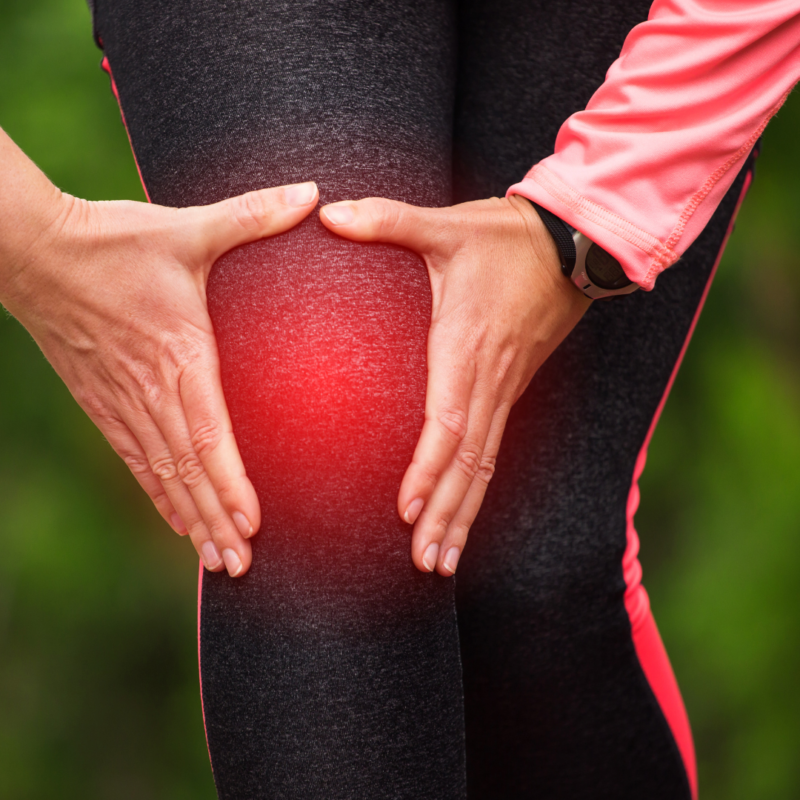
Are you dealing with knee pain? Regardless of what’s causing this pain, it’s important to take measures to combat it so that you can get back to your everyday activities as quickly and safely as possible. In many cases, stretching can be helpful in reducing knee pain. If you’re dealing with knee pain and are looking for ACL Surgery NYC, we invite you to visit us at the New York Sports Medicine Institute.
How Does Stretching Help With Knee Pain?
In many cases, suppose knee pain is the result of an injury, arthritis, or you are recovering from surgery. In that case, gentle stretching and strengthening exercises can be beneficial in relieving knee pain. Various stretching exercises will help reduce pain while also restoring and improving the knee joint’s range of motion, strength, and flexibility. These exercises will help avoid the stiffness that often accompanies prolonged immobility periods. You must consult with a doctor before beginning knee pain relief exercises, especially after an injury, surgery, or if you have arthritis. At the New York Sports Medicine Institute, ACL Surgery NYC, we will make an assessment and formulate a treatment, stretching, and exercise plan that best fits you and your needs.
Which Stretching Exercises are Effective?
Various stretching techniques can be effective in relieving knee pain and improving strength, flexibility, and range of motion in the knee joint. Some stretching exercises that have shown to be effective in relieving knee pain are described below:
- Quadriceps Stretch: Using a chair or wall for support, raise a foot and grab it with your hand, pulling it as close to your glutes as possible before you feel pain. This stretch will improve the flexibility of your knee joint, hip flexor, and quadricep muscles.
- Hamstring Stretch: After laying down on your back with your legs straightened as much as possible, raise one leg, grab your thigh with both hands, and slowly guide the leg up towards your head while keeping the leg as straight as you can. This stretch targets the back of your leg up to the glutes and will help with relieving knee pain.
- Hamstring Curl: Using a chair or wall for support, bend one knee and raise the foot towards the ceiling, coming as close to your glutes as possible. Do this slowly, and complete 2 to 3 sets of 10 repetitions. This bend and stretch will help improve mobility and relieve pain in the knee joint while strengthening the hamstrings.
- Leg Extensions: Sit in a chair with good posture and broaden your shoulders. Raise your leg out in front of you, straightening it so that your foot is directly out in front of you. Slow, controlled repetitions will work your quadricep muscles while stretching out and strengthening the knee joint, which will help relieve pain.
- Straight Leg Raises: Lay down on your back with one leg bent and one leg straightened. Slowly raise the straightened leg until it is at the same height as the bent knee of the other leg. Repetitions of this exercise will strengthen the quadriceps and hip flexors while also placing a healthy strain on the knee joint that will help with pain relief.
- Prone Leg Raises: Lay down flat on your stomach with your legs straightened. Slowly lift one leg as high as you can while keeping it straightened. Hold this position for about 5 seconds before slowly lowering the leg. This exercise will strengthen the hamstrings and glutes while also placing a minimal but rehabilitative strain on the knee joints.
Other Exercises That Help Relieve Knee Pain: ACL Surgery NYC
While many stretches are convenient, can be done at home by yourself, and are highly effective, there are other options for relieving knee pain once you have built up enough strength in your knees. Always consult with a doctor to ensure that you can safely partake in these exercises. Some of these options are listed below:
- Yoga.
- Walking.
- Swimming.
- Stationary Cycling.
- Water Aerobics.
ACL Surgery NYC
Knee pain can be highly intrusive in our lives, stopping us from partaking in our daily activities, having fun with friends and family, and playing the sports we love. Don’t let knee pain control you any longer. If you’re on the hunt for a surgeon in NYC, we are here to help treat injuries of any major ligament of the knee. Contact the New York Sports Medicine Institute today.

Knee replacement surgery is a serious procedure that is performed by an orthopedic surgeon to relieve pain and restore function to the damaged joint. The procedure is commonly performed on patients who suffer from osteoarthritis. Those who suffer from osteoarthritis experience excruciating pain, and surgery is typically the only way to get relief. Those who struggle with standing up, sitting down, going upstairs, and walking are prime candidates for a knee replacement. After a knee replacement, recovery is critical to ensure the joint heals correctly, and it helps you get back to how your lifestyle was before the injury. At New York Sports Medicine Institute, ACL Surgery NYC can perform the procedure minimally invasive and assist the patient throughout the recovery process.
What are the risks of knee replacement surgery?
Some of the risks associated with knee replacement surgery include the following:
- Infection
- Blood clots in the leg vein or lungs
- Heart attack
- Stroke
- Nerve damage
Additionally, knee replacements can wear down over time. Performing intense physical activity and consistently putting stress on the joint can cause it to last for a shorter amount of time. Once the knee replacement surgery is performed, the recovery process begins. The process involves physical therapy techniques to strengthen the new joint and the surrounding muscles. New York Sports Medicine Institute’s ACL Surgery NYC will use a variety of physical therapy techniques to create a recovery plan best suited for the patient. Continue reading below to find out what the recovery process looks like.
What will the recovery process look like?
The recovery process typically takes 12 weeks, depending on the patient. The recovery process begins the first day after surgery. The next day, a physical therapist will assist you in standing up and walking with an assistive device, like a walker, cane, or crutch. A physical therapist will help you practice getting in and out of bed with the help of such devices. In the early stages of recovery, a passive motion machine may be used to move the knee joint slowly to prepare for physical therapy later on. On the second day of recovery, a patient should begin to practice bending and straightening their knee. A patient is usually discharged three days after surgery. However, this varies by person. When the patient is discharged, physical therapy should be done for the following weeks to help speed up recovery. If you have had knee replacement surgery, contact ACL Surgery NYC, for information about the recovery process.
Three weeks into the recovery process
By the third week of recovery, the patient can practice standing and walking for about ten minutes and straightening the knee fully. The patient should also be able to walk without an assistive device. If the patient is struggling with walking without assistance, they can place the cane in hand on the opposite side so they are not as reliant on it to walk.
Midway through recovery
By the 6 to 7-week mark of recovery, the patient should see great improvement in the flexibility and strength of the knee. They should be able to walk on their own and continue physical therapy to strengthen the knee. Many patients with desk jobs can return to work during this point in the recovery process. Some patients with more physically demanding jobs may need 12 weeks to return. Additionally, a patient can return to driving midway through the process and possibly travel. It is important to stay active during this time by walking and practicing the exercises given by a physical therapist. Some of these exercises that help strengthen and improve mobility are:
- Stationary biking
- Hip abductions
- Step-ups
- Toe raises
- Heel raises
- Mini squats
- Leg balances (practicing balancing on one foot)
For more information on exercises to perform during the knee recovery process, contact our orthopedic in Franklin Lakes, NJ.
The end of recovery
By week 12, a patient is towards the end of their recovery process. They should continue practicing the exercises described above and avoid the following exercises until full recovery:
- Running
- Skiing
- Basketball
- Football
At this point, a patient has more mobility and minimizes pain, and can begin low to moderate-impact activities like bicycling. Recovery can be a difficult and lengthy process. At New York Sports Medicine Institute, ACL Surgery NYC is here to help throughout your recovery and create an individualized plan best suited for your goals and lifestyle. To book an appointment, contact us today!
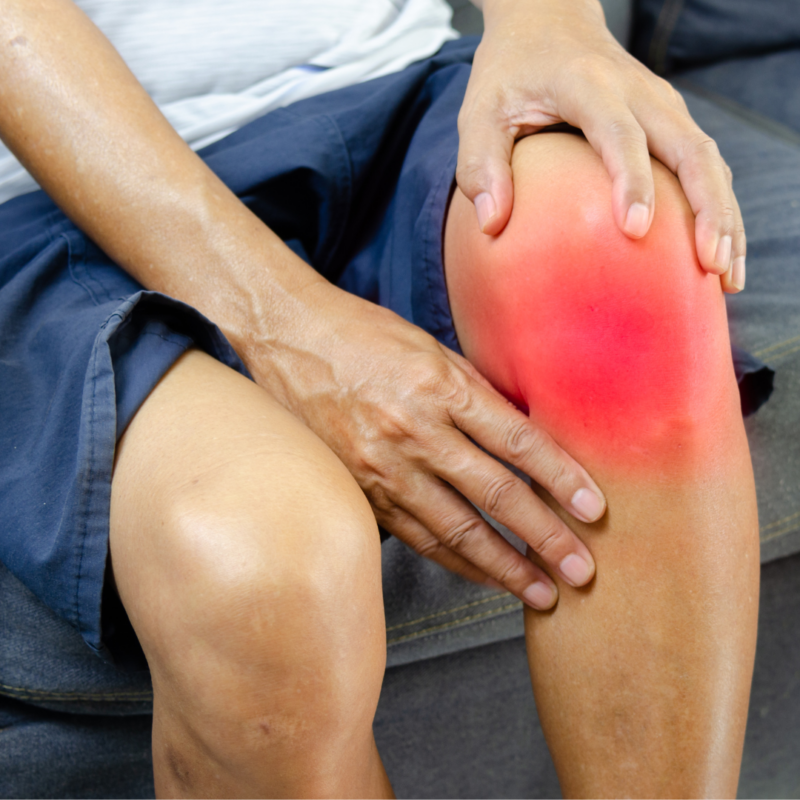
Having a knee replacement is a major decision in anyone’s life and a life-changing moment for many. Knee replacement surgery or knee arthroplasty is a procedure meant to restore function to the knee joint. This is done by replacing the biological knee structure with a prosthesis or artificial joint. The artificial joint is made up of metal alloys and high-grade polymers to ensure the replacement lasts and functions properly. Each knee prosthesis is formed specifically for the patient, and the procedure is mostly determined by the patient’s age, activity level, and overall health. Finding the right ACL Surgery NYC can be a difficult task. That’s why we have you covered here at New York Sports Medicine Institute. Here at NYSMI, we provide our patients with the highest quality treatment options and top-of-the-line orthopedists.
When is Knee Replacement Needed?
Knee replacement surgery is typically needed when there is a loss of mobility within the knee joint. A reduced range of motion or pain when moving the joint may require knee replacement if no other treatment options have worked or are available. The knee joint becomes worn out over time and can lead to an influx of pain when performing simple daily activities. It’s important to seek the advice of a medical professional if you are unable to partake in certain activities due to limiting knee pain. Here at NYSMI, we have you covered with the highest-quality ACL Surgery NYC! Many conditions may lead to needing a knee replacement; here are some of them:
- Rheumatoid Arthritis
- An injury to the knee or surrounding area
- Bone disorder or deformity within the knee joint or surrounding area
- Deformity of the knee joint itself
- Gout
- Hemophilia
When to Seek Treatment At ACL Surgery NYC
Knowing when to seek treatment is vital, as a procedure of this magnitude can be life-changing for many. Knee surgery is typically offered to those who are in dire need of a joint replacement and can’t seem to continue living with the complications they’re currently going through. At NYSMI, ACL Surgery NYC would like to offer a list of typical scenarios that require a knee replacement surgery:
- Severe pain, swelling, or inflammation within the knee joint. Causing a reduction in the range of motion and limiting movement.
- Knee pain affects sleep and causes sleep deprivation due to either severe pain or the feeling of being uncomfortable.
- Everyday activities are tough to partake in because of your knee pain. This can include activities such as driving, getting in and out of your seat, walking up and down stairs, etc.
- It is difficult to leave the house even for work or to be with friends and family.
- Symptoms of depression and anxiety due to the lack of activity caused by knee problems.
Other Options
Not all patients with these conditions meet the requirements for a knee replacement, as there are other treatment options as well. Your orthopedist may suggest trying out other procedures before performing a knee replacement, as it is a major surgery. Other treatments include physical therapy and cortisone or steroid injections. These treatment options are proven to reduce pain in patients and also bring mobility back to the joint. Finding the right orthopedist to give you the advice you need is essential. However, if you are seeking out the best NYC acl surgeon, check out NYSMI! We will perform an examination of the knee and make sure the correct acl procedure is performed.
Contact NYSMI for ACL Surgery NYC
Having a knee replacement is a procedure that can change your life. Whenever having surgery of this magnitude, it’s essential to understand the ins and outs and how exactly you can benefit from the surgery. As with any surgery, there are risks involved and a recovery process. That’s why finding the right orthopedist plays an essential role in getting back on your fight as safely and efficiently as possible. NYSMI is here to help, providing you with top-quality expert orthopedic surgeons that specialize in quality care and treatment. We promise that by scheduling an appointment with us, you are not only finding the best ACL Surgery NYC, but you’re also putting yourself in the best position to live the pain-free life you desire! Visit us or schedule an appointment on our website today for an acl reconstruction surgeon to see how our minimally invasive surgery to reconstruct the torn acl!
Book Your Appointment Below!

